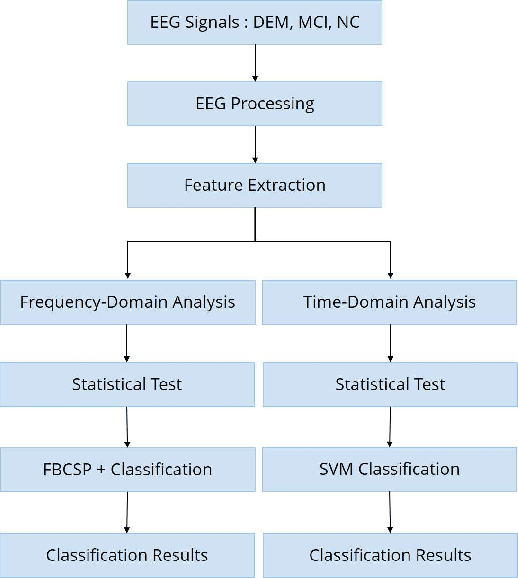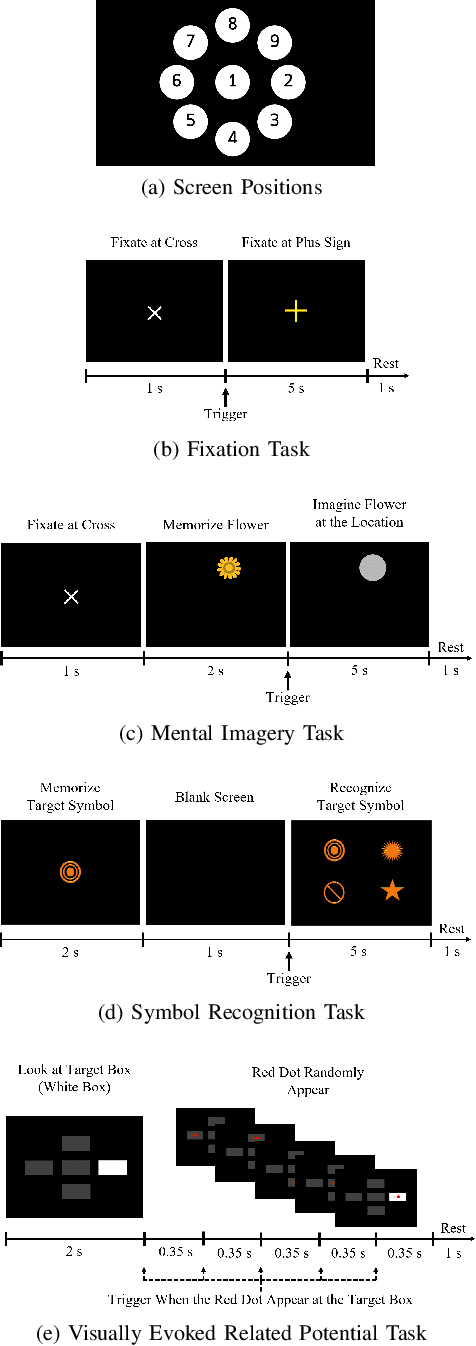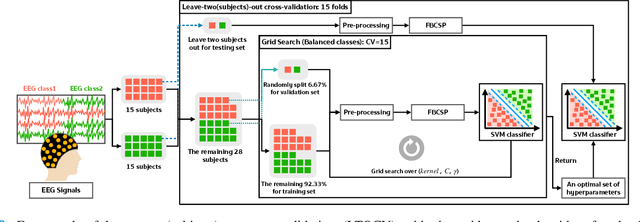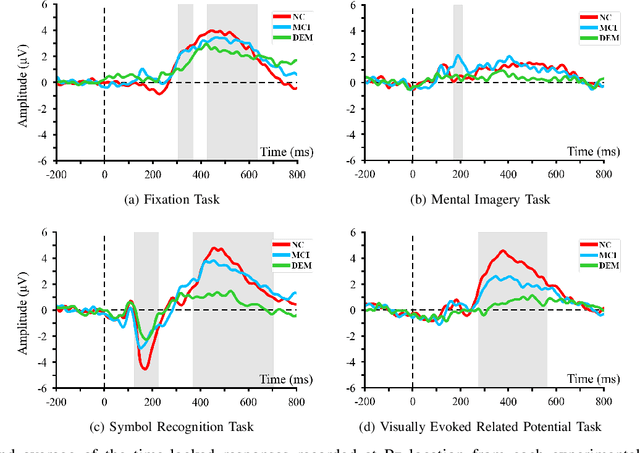Thananya Charoenpattarawut
A Pilot Study on Visually-Stimulated Cognitive Tasks for EEG-Based Dementia Recognition Using Frequency and Time Features
Mar 05, 2021



Abstract:Dementia is one of the main causes of cognitive decline. Since the majority of dementia patients cannot be cured, being able to diagnose them before the onset of the symptoms can prevent the rapid progression of the cognitive impairment. This study aims to investigate the difference in the Electroencephalograph (EEG) signals of three groups of subjects: Normal Control (NC), Mild Cognitive Impairment (MCI), and Dementia (DEM). Unlike previous works that focus on the diagnosis of Alzheimer's disease (AD) from EEG signals, we study the detection of dementia to generalize the classification models to other types of dementia. We have developed a pilot study on machine learning-based dementia diagnosis using EEG signals from four visual stimulation tasks (Fixation, Mental Imagery, Symbol Recognition, and Visually Evoked Related Potential) to identify the most suitable task and method to detect dementia using EEG signals. We extracted both frequency and time domain features from the EEG signals and applied a Support Vector Machine (SVM) for each domain to classify the patients using those extracted features. Additionally, we study the feasibility of the Filter Bank Common Spatial Pattern (FBCSP) algorithm to extract features from the frequency domain to detect dementia. The evaluation of the model shows that the tasks that test the working memory are the most appropriate to detect dementia using EEG signals in both time and frequency domain analysis. However, the best results in both domains are obtained by combining features of all four cognitive tasks.
 Add to Chrome
Add to Chrome Add to Firefox
Add to Firefox Add to Edge
Add to Edge